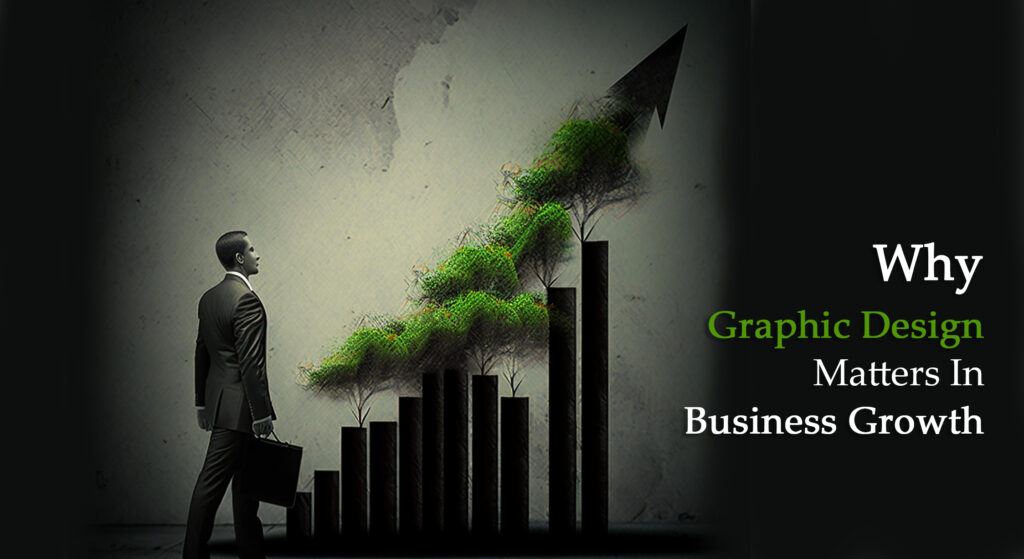
Welcome to KLI Advertising.
How can we help you ?

Welcome to KLI Advertising.
How can we help you ?

Designing is more than just an artistic pursuit. It is a form of communication that speaks directly to the viewer, often in ways words cannot. Among the many forms of design, one area of special interest is graphic design. This comprehensive guide aims to help you understand what graphic design entails, its importance, various aspects, and how it has transformed over the years.
At its core, graphic design is a form of visual communication. It involves the creation and organization of visual elements—such as images, shapes, color, typography—to convey a specific message to an audience. From the logo on your favorite coffee mug to the apps on your smartphone, graphic design is ubiquitous, influencing
Why does graphic design matter, you may wonder? Its primary role is to communicate and attract attention. Businesses utilize graphic design to establish their identity, differentiate themselves from competitors, and connect with their customers. A well-designed logo, for instance, can create a lasting impression and foster brand loyalty. However, the application of graphic design isn’t restricted to businesses alone. It’s integral to many fields such as education, where it aids in making complex concepts more digestible, or in social awareness campaigns, where it helps create powerful messages to motivate change.
Graphic design revolves around a set of basic elements and principles. The elements include line, shape, color, texture, space, and typography. A designer manipulates these elements, applying principles such as balance, contrast, emphasis, movement, pattern, rhythm, unity, and space, to create visually appealing and effective designs. For example, color is used not just for aesthetic appeal but also to evoke emotions and establish a brand’s identity. Similarly, the principle of balance is applied to create stability in a design, with asymmetrical balance often used to draw the viewer’s attention to a particular element.
Graphic design has a rich history, dating back to ancient times with cave paintings and hieroglyphics. It evolved through various periods like the Middle Ages, Renaissance, Industrial Revolution, and the 20th century, adapting to technological advances and cultural shifts. Modern graphic design truly started in the early 20th century with movements like Bauhaus and Swiss Design, which emphasized functionality, simplicity, and the use of grids. The advent of computers in the late 20th century revolutionized graphic design, making it more accessible and diverse.
In today’s digital age, graphic design has expanded far beyond print media. With the rise of digital technology, designers now work on a variety of platforms, creating websites, apps, social media posts, and digital advertisements. UX/UI Design, a subset of graphic design, focuses on enhancing user satisfaction by improving the usability and accessibility of digital products. This fusion of aesthetics and functionality illustrates the dynamic nature of graphic design. The introduction of design software like Adobe Photoshop, Illustrator, and InDesign has made design more efficient and versatile. Even non-professionals can now create basic designs using intuitive tools and templates provided by apps like Canva.
The future of graphic design lies in innovation and adaptability. As technology evolves, so will design. We’re already witnessing trends like augmented reality (AR) and virtual reality (VR) influencing graphic design. Designers are working to create immersive experiences, blurring the lines between reality and digital interface. Furthermore, the rise of artificial intelligence (AI) is expected to impact the design process. AI can automate certain tasks, giving designers more freedom to focus on creative aspects. However, it also brings up the debate around originality and the role of human touch in design.
Graphic design encompasses various specializations, each with a unique set of requirements and skills.
This traditional form of design includes brochures, magazines, banners, posters, and packaging. Despite the rise of digital media, print design remains relevant and essential .
This involves creating visuals for digital platforms like websites, social media, and mobile apps. Web design, UI/UX design, and social media graphics all fall under this category.
This area focuses on creating distinctive identities for brands. It includes designing logos, business cards, and brand style guides.
This increasingly popular type combines graphic design and animation to create engaging video content for commercials, movies, and online platforms.
A successful graphic designer possesses a mix of technical and soft skills:
Creativity is at the heart of graphic design. Designers need a keen eye for aesthetics and the ability to create visually pleasing designs.
Proficiency in design software like Adobe Creative Suite is essential. Understanding of color theory, typography, layout design, and print processes is also vital.
Graphic design is about conveying a message. Designers must communicate effectively with clients and understand their needs to translate them visually.
Each design project presents unique challenges. Designers must be adept at finding innovative solutions that fulfill both aesthetic and functional requirements.
Meeting deadlines is crucial in the design world. Designers often juggle multiple projects and must manage their time efficiently.
The journey to becoming a graphic designer can take many paths. Some choose formal education, earning a degree in graphic design or a related field. This provides a solid foundation in design theory and hands-on training with design software. However, a degree isn&apos’t always necessary. Many successful designers are self-taught or have learned through online courses, tutorials, and practice. Websites like Coursera, Skillshare, and Udemy offer high-quality graphic design courses taught by industry professionals. Furthermore, building a portfolio is critical. It showcases your work, skills, and style to potential employers or clients. Whether self-taught or formally educated, continual learning and practice are key. The field evolves quickly, and designers must keep up with new tools, trends, and techniques.
Graphic design plays a significant role in shaping societal perceptions. It influences consumer choices, promotes cultural understanding, and aids in social change. Designers have the power to encourage positive behavior through their designs. For example, well-crafted public service announcements can raise awareness about important issues like climate change, health, and social justice.
Graphic design is a multifaceted, ever-evolving field, merging creativity with communication. Its impact is far-reaching, shaping business identities, enhancing user experiences, and influencing societal perceptions. It requires a mix of artistic skill, technical knowledge, and an understanding of human psychology. Whether you’re a budding designer, a business owner, or just someone intrigued by visual storytelling, delving into the world of graphic design can open a new perspective on how we interact with the world. After all, every design has a story to tell, a message to convey, and an emotion to evoke. Intrigued by the world of graphic design?
Want to make your business stand out with impressive graphic design?
Whether you’re a small business owner looking to boost your brand’s visual appeal or a seasoned professional wanting to upgrade your marketing materials.
We’ve got you covered.
Discover our expert guidance, resources, and tailored opportunities designed to meet your business’s unique needs.
Every design has a story to tell, and we’re excited to help you tell yours!
Get in touch with us today or click here to begin your design journey.
Let’s design a brighter future for your business together!
By KLI
SEO Strategist | Marketing Head | Digital Marketing Services
Connect on LinkedIn